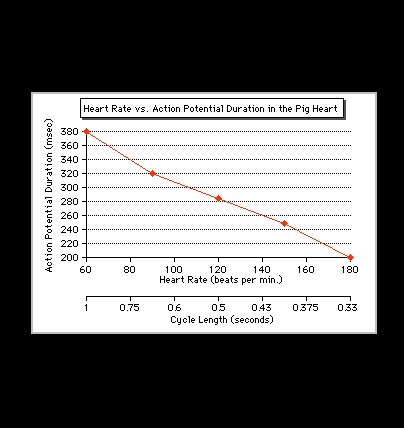
[I’VE INTENTIONALLY DELETED ALL OF FRAME 60-TEXT AND FIGURE] The rate, or cycle length dependence of action potential duration (and therefore of the refractory period) is an important concept because it explains why an early premature response is more likely to conduct aberrantly if the cycle length preceding the premature response is long. This graph illustrates the relationship between cycle length and action potential duration in ventricular fibers from a pig heart. It shows that the action potential duration is longer at slower rates (longer cycle lengths) than at more rapid rates (shorter cycle lengths). Thus, a premature response will be more likely to find a portion of the conducting system to be partially or totally refractory when the preceding cycle length is long than when it is short.
